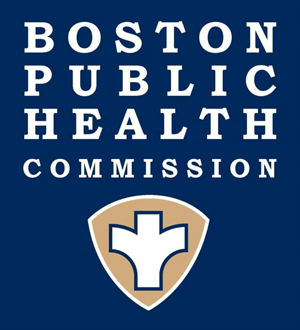Public Resources
Public Resources
Disease-Specific Resources [edit]
This section contains planning resources specific to a variety of emerging and/or highly infectious diseases of concern.
MUST READS
- Pandemic Influenza Preparedness and Response Guidance for Healthcare Workers and Healthcare Employers
OSHA
Collaboration with state and federal partners is vital to ensure that healthcare workers are adequately protected during an influenza pandemic. The goal of this document is to help healthcare workers and employers prepare for and respond to an influenza pandemic. The guidance document is organized into four major sections: Clinical background information on influenza, Infection control, Pandemic influenza preparedness, and OSHA standards of special importance.
- Infection Control for Influenza
CDC
This guidance is current for the 2018-2019 influenza season. This updated guidance continues to emphasize the importance of a comprehensive influenza prevention strategy that can be applied across the entire spectrum of healthcare settings.
- Pandemic Influenza Planning
CDC
An influenza pandemic is a global outbreak of a new influenza A virus. Resources are available here including Allocating and Targeting Pandemic Influenza Vaccine Guidelines and HHS Pandemic Influenza Plan 2017 Update.
- IS-522: Exercising Continuity Plans for Pandemics
FEMA
This course is based on the pandemic continuity tabletop exercise Determined Accord. The course covers fundamental continuity principles and processes but is focused on the special continuity requirements for pandemics.
- Hospital Preparedness Checklist For Pandemic Influenza: Focus on pandemic (H1N1) 2009 Hospitals
WHO
To enhance the readiness of the health facilities to cope with the challenges of an epidemic, a pandemic or any other emergency or disaster, hospital managers need to ensure the initiation of relevant generic priority action. This document aims to provide a checklist of the key action to carry out in the context of a continuous hospital emergency preparedness process.
MUST READS
- Ebola (Ebola Virus Disease)
CDC
Information for clinicians regarding Ebola Virus Disease including resources on evaluating patients, cleaning and disinfecting, emergency services, and Personal Protective Equipment (PPE).
- Preparing U.S. Hospitals for Ebola Hospitals
CDC
CDC has developed a strategy to help healthcare facilities and state health officials prepare for patients with possible or confirmed Ebola. This strategy identifies which hospitals will provide different levels of care for patients being assessed and treated for Ebola.
- Regional Treatment Network for Ebola and Other Special Pathogens
U.S. Department of Health & Human Services ASPR
HHS has created a regional treatment network for future infectious disease outbreaks through a tiered system. It describes the roles of the frontline healthcare facility, the assessment hospital, the treatment center, and any regional or other special pathogen treatment centers, including transport.
- Ebola Preparedness Protocols
CDC
CDC has policies, procedures and tools developed within Emory Healthcare to enable physicians and staff to deal safely and effectively with various risk categories of patients who could be or are infected with the Ebola virus. This resource requires registration.
- Ebola-Associated Waste Management
CDC
This guidance is intended to provide key information about procedures and regulations regarding waste associated with the care of patients under investigation (PUIs) for or with confirmed Ebola Virus Disease (EVD). Waste generated in the care of PUIs or patients with confirmed EVD is subject to procedures set forth by local, state and federal regulations.
- Ebola Virus Disease Incident Response Guide Hospitals
Bellevue Hospital
This response guide provides a protocol to screen, isolate, and treat patients who present to the facility with suspected or confirmed Ebola Virus Disease while minimizing the risk of transmission to health care workers and others.
- NYC Health + Hospitals Ebola Virus Disease Concept of Operations
NYC Health + Hospitals
This document provides NYC Health + Hospitals a strategic high-level overview based on the health care facility tiered approach to safely and effectively manage and respond to persons/patients with suspected or confirmed Ebola Virus Disease (EVD).
- Exercise Design Templates
National Ebola Training and Education Center (NETEC)
These templates contain exercise content and material based on the HSEEP model and related to assessing, treating and managing Ebola virus disease and other special pathogen patients for Frontline Facilities, Assessment Hospitals, State-Designated Ebola Treatment Centers, Regional Ebola and Special Pathogen Treatment Centers & Regional Partners, and Health Care Coalitions
- Interfacility Transport of Confirmed Patients or PIU EMS
CDC
State EMS officials and regional and state EMS planners can use this information to develop regional transport networks, local transport plans, and standard operating procedures. Managers and medical directors can use this guidance to develop procedures and protocols for their services to conduct inter-facility transport (including intrastate or interstate) of PUIs and patients with confirmed Ebola; may also use the information to prepare, educate, and train EMS personnel. Individual providers may use this information to stay safe when responding to and transporting PUIs or patients confirmed to have Ebola.
- Air to Ground Transport Fact Sheet
U.S. Department of Health & Human Services ASPR
Provides guidance to aid in developing standard operating procedures for air-to-ground transfers of patients with Ebola or other serious infectious diseases that present unique patient transport challenges.
- ISOPOD Basics EMS
National Ebola Training and Education Center (NETEC)
Discusses use of an isopod during patient transfer; an isopod is a negative-pressure individual patient isolation and transportation system that keeps contamination and disease inside the unit, protecting first responders while simultaneously allowing for life-saving medical procedures
o ISOPOD Basics: Patient Care - ISOPOD Basics and Patient Care
o ISOPOD Basics: Immediate Response Technology (IRT) Model – Assembling and using ISOPODs manufactured by IRT
o ISOPOD Basics: TVI Model - Assembling and using ISOPODs manufactured by TVI
- Interim Guidance for Preparing Ebola Assessment Hospitals (August 2018)
CDC
Guidance to assist state and local health departments and acute care hospitals as they develop preparedness plans for patients under investigations (PUIs) for Ebola virus disease (EVD).
- Interim Guidance for Preparing Ebola Treatment Centers (January 2015)
CDC
Guidance to assist state and local health departments and acute care hospitals as they develop preparedness plans to serve as Ebola treatment centers.
- Addressing Infection Prevention and Control in the First U.S. Community Hospital to Care for Patients With Ebola Virus Disease: Context for National Recommendations and Future Strategies Hospitals
Annals of Internal Medicine
Describes the multiple tiers of the occupational safety and health hierarchy of controls (engineering controls, administrative controls, and PPE) that were implemented in a community hospital in Texas, in order to treat a patient diagnosed with Ebola virus disease (EVD).

